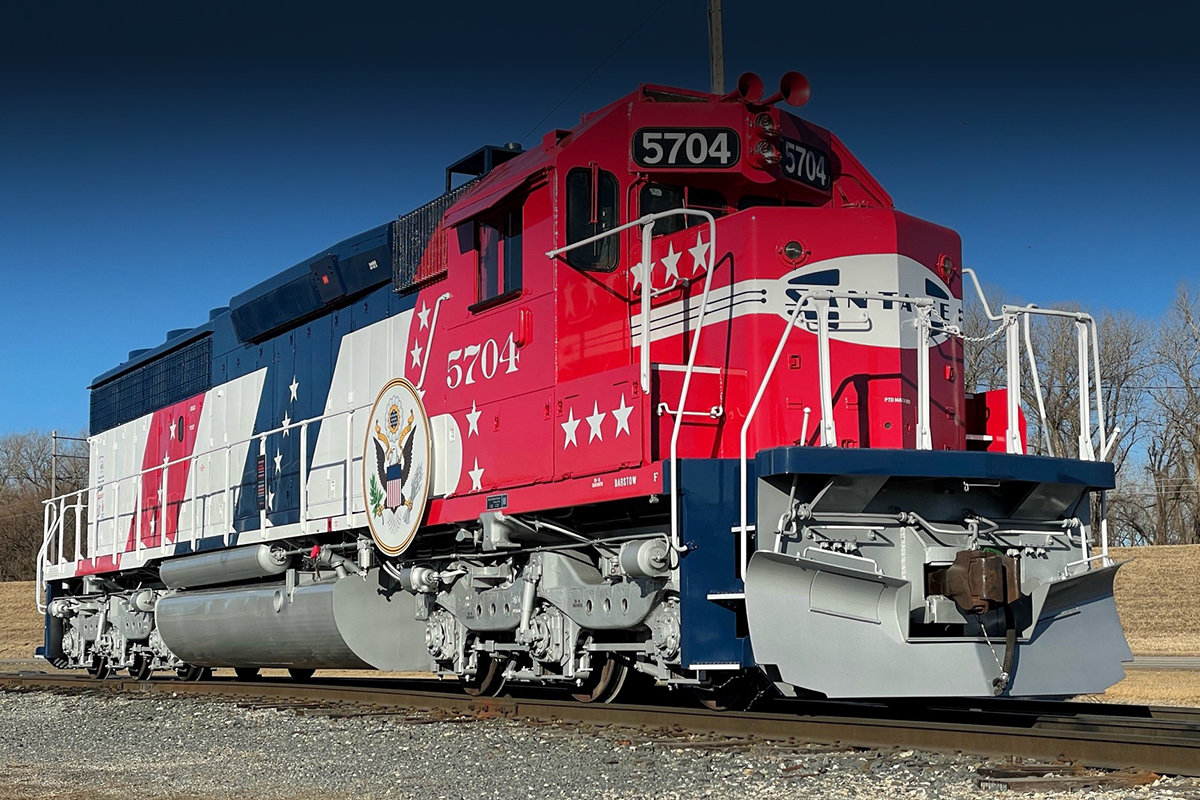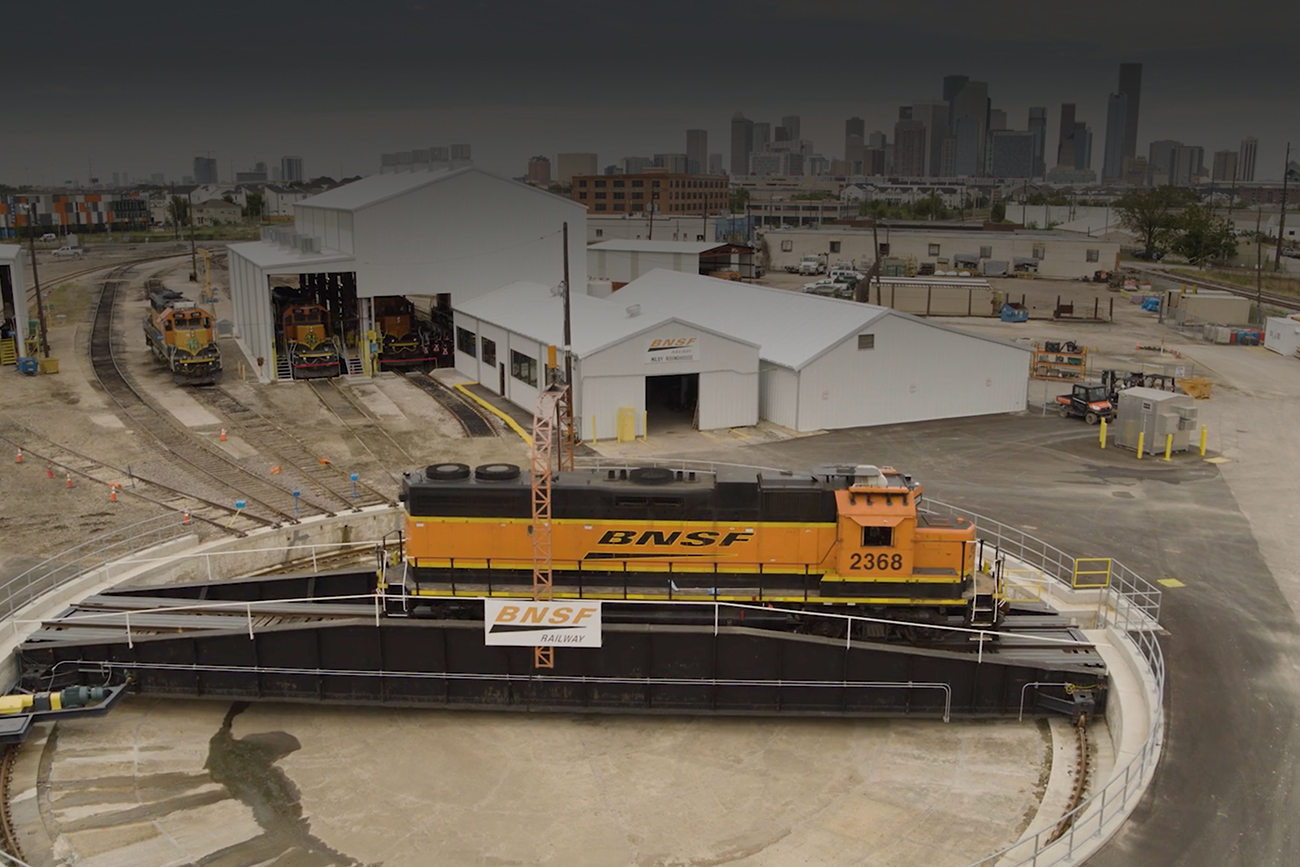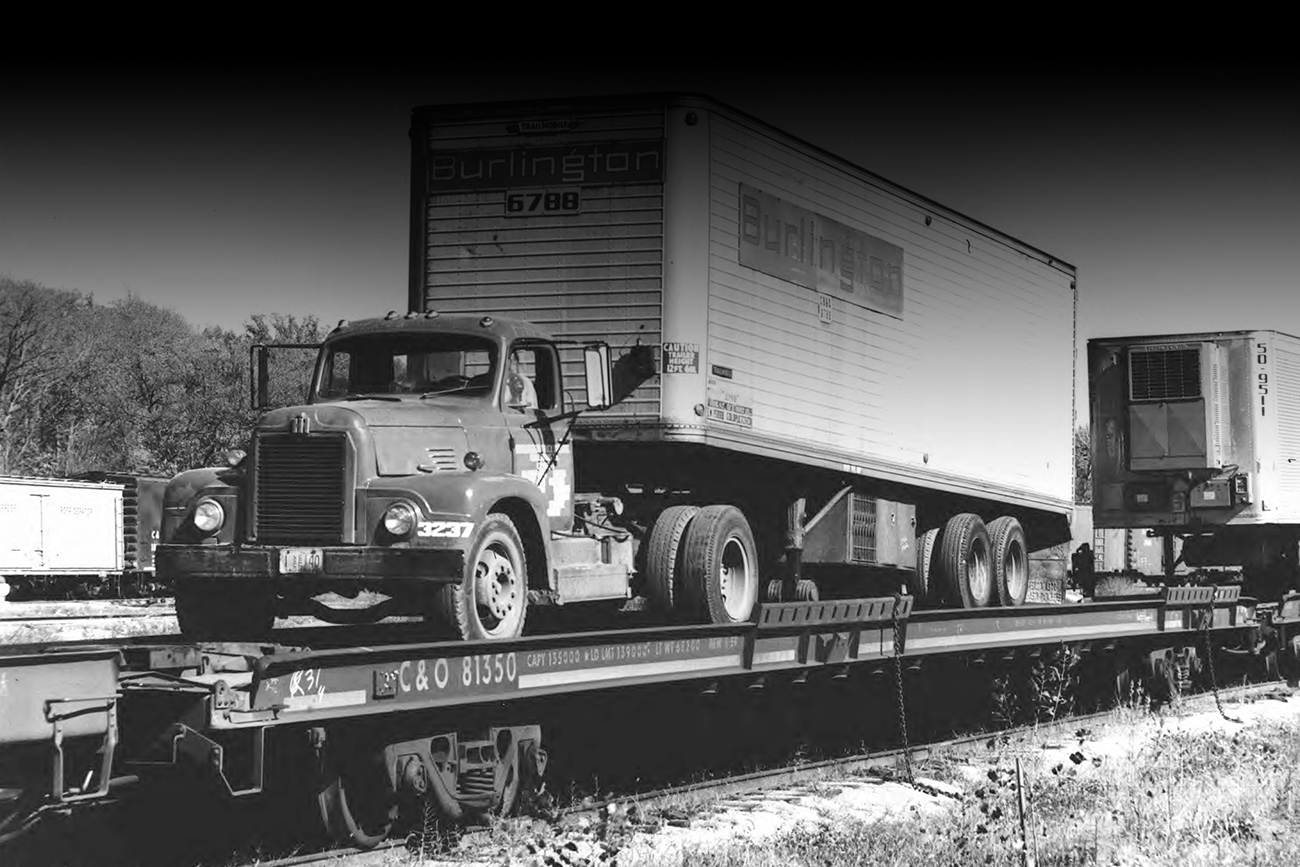Mandan and Bismarck share a long history with BNSF
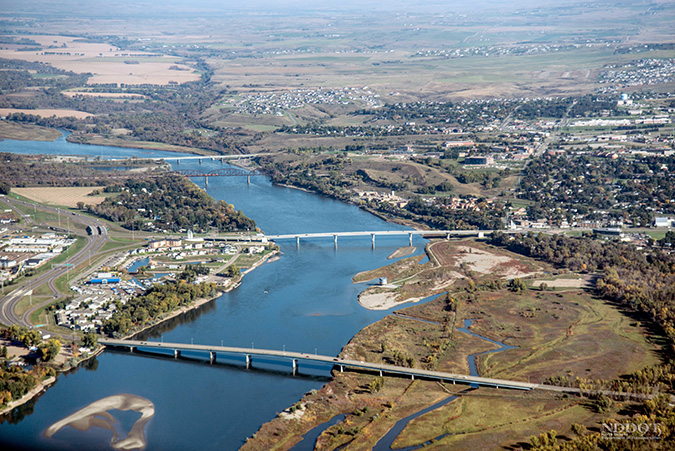
As it winds across the North Dakota plains, a freight train slows and stops in a busy rail yard. Tall grasses wave in the breeze, and verdant trees shade the streets that run through the friendly metropolitan area. Nestled on both sides of the mighty Missouri River are two towns that are rich in history and enjoy a bright future.
Welcome to the neighboring cities of Bismarck and Mandan, North Dakota—two towns consistently ranked as “best small towns” and shared by generations of people known for their hospitality.
Railroads were built to connect people, products and places, which is why they feature prominently in U.S. history. The Bismarck-Mandan area is no exception. The two began to develop with the arrival of the transcontinental railroad in the summer of 1873.
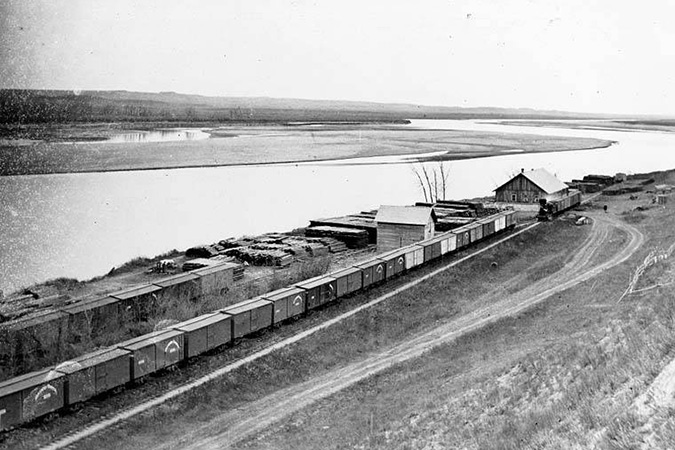
Bismarck-Mandan had become the westernmost extension of the Northern Pacific Railway (NP), which needed to further its expansion. But the Missouri River was a major obstacle to transportation of railroad construction materials, with freight cars loaded onto ferries to cross the river.
High waters and ice at times prevented the ferries from operating, causing materials to pile up on the bank until conditions improved. During the coldest months, railroad workers laid tracks across the frozen river. This was not only costly but also time-consuming and dangerous.
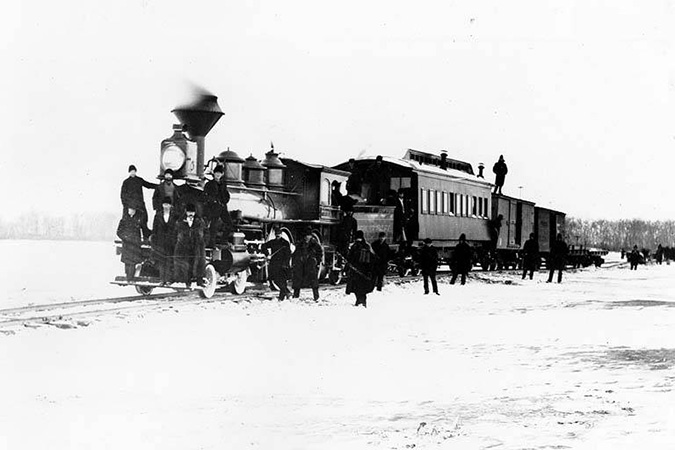
In 1882, engineers and workers completed the construction of a 1,426-foot-long railroad bridge, crossing the Missouri River from Bismarck to Mandan. To spur growth of towns along the tracks, NP advertised its communities and lands in bulletins in several different languages as well as sent representatives to Germany, England and other European countries. The goal was to attract hard-working farmers to the North Dakota territory with the promise of free land through the Homestead Act.
As immigrants settled in their new homes, they established farms, shipping crops to markets by rail. Communities along the tracks began to flourish, with the railroad providing goods and services that helped the region grow and thrive. Bismarck and Mandan were – and continue to be – vital to the state’s growth.
"Mandan [where BNSF has primary operations] has experienced three growth spurts in its history,” Kathye Spilman of the Mandan Historical Society said. “The very first was in the early 1870s with the announcement of the location of the river bridge construction. The second was in the 1920s with the completion of the first automobile bridge to the city. Finally, in the early 1950s, it was the construction of the nearby oil refinery."
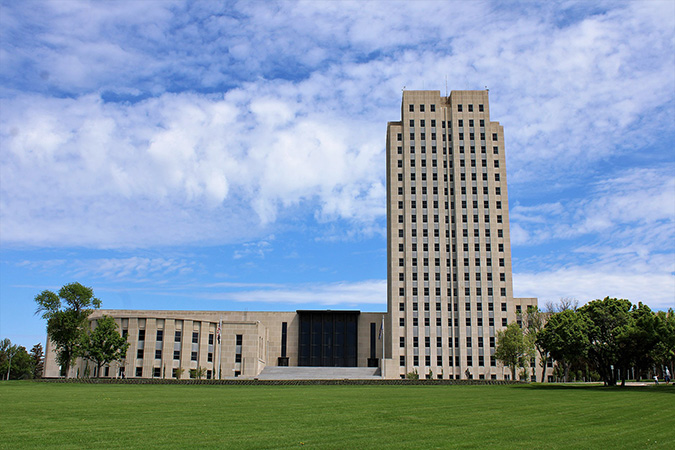
Fast forward to today and Bismarck is now celebrating its 150th anniversary and together with Mandan boast a population of nearly 100,000 people. The cities are a hub with parks, museums, restaurants and other attractions that make the area an ideal place for families to call home.
And all these years later, the river bridge that began the region’s initial growth spurt will be replaced with a modern railroad bridge built to last 100 years or more during a large-scale construction project lasting two to three years once it starts.
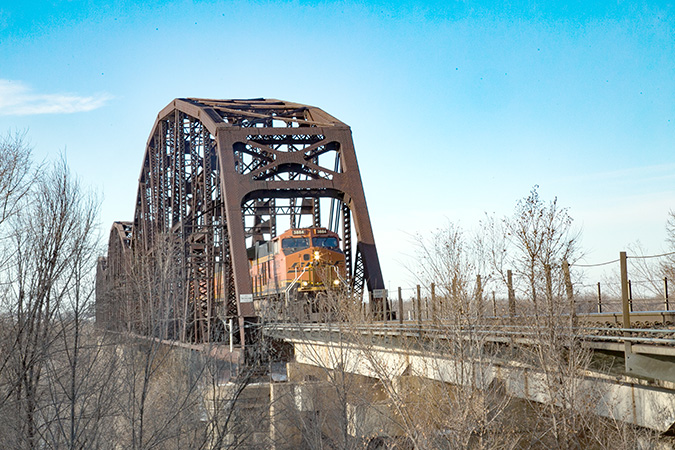
In 2022, there are more than 200 BNSF employees in the area, with Mandan hosting one of our largest rail yards and one of two car shops in the state. Mechanical, signal and track employees, along with train crews, operate out of the downtown Mandan facility. Top commodities moved by BNSF trains in the area include:
- Coal
- Manufactured goods
- Industrial products
- Agricultural products (primarily grain)
People are drawn to the Bismarck-Mandan area because of its thriving , great schools and low unemployment rates. The cities host corporate and regional offices for energy companies working in the state and are in the center of the state’s agriculture sector.
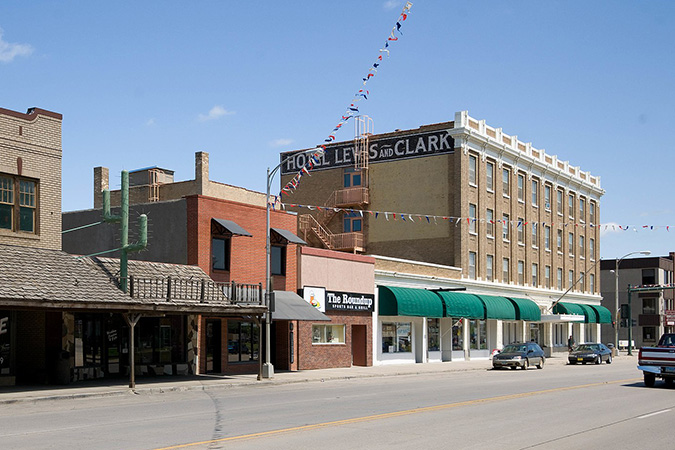
“Mandan runs many different types of commodities through the terminal,” Justin Selzler, BNSF Senior Trainmaster in Mandan, said. “Coal is the main one, coming from the Powder River to power plants in North Dakota, Minnesota, and Wisconsin. Next up is grain trains moving between the Midwest and the Pacific Northwest. Our locals on the north branch between Mandan and Beulah service many industries, shipping everything from coal, fertilizer, and fuel. During the summer months we have large amounts of aggregate moving from the east and west to local companies for use in local construction projects. We also see mixed freight trains hauling anything from autos to building products to food and clothing.”
BNSF continues to help identify opportunities for growth near our tracks. BNSF has been a strong advocate of community growth in the Bismarck-Mandan area. We’ve played a leading role in bringing people and goods to this region for the last 150 years – and that's not slowing down any time soon.
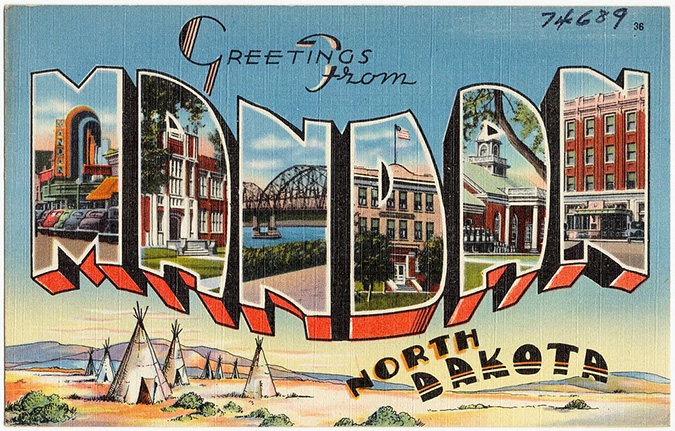
Timeline
1803: Lewis and Clark spent the winter of 1803-1804 in the area of what is now Bismarck. Here they met Sakakawea, who guided them on their journey west.
1862: Congress passed the Pacific Railway Act, funding the building of a transcontinental railroad through land grants and low-interest federal loans.
1864: President Abraham Lincoln signed the Northern Pacific Railroad Land Grant, the largest railroad land grant in American history. This provided lands for the purposes of building and maintaining an intercontinental railroad running from Lake Superior to the Pacific Ocean.
1868: The Northern Pacific Railway (NP) began operation. Its tracks reached Moorhead, Minnesota, just across the Red River from Fargo in 1871.
1872: NP was granted a portion of land to build towns and sell farmland between Fargo and Bismarck. In hopes of bringing German capital investors to the railroad, the Northern Pacific Railway named the town Bismarck for Germany’s “Iron Chancellor” Prince Otto Von Bismarck. Mandan was named for the Mandan or Mantani Indians, who occupied the land hundreds of years before the settlers, and it was founded as the center of western expansion for the railroad.
